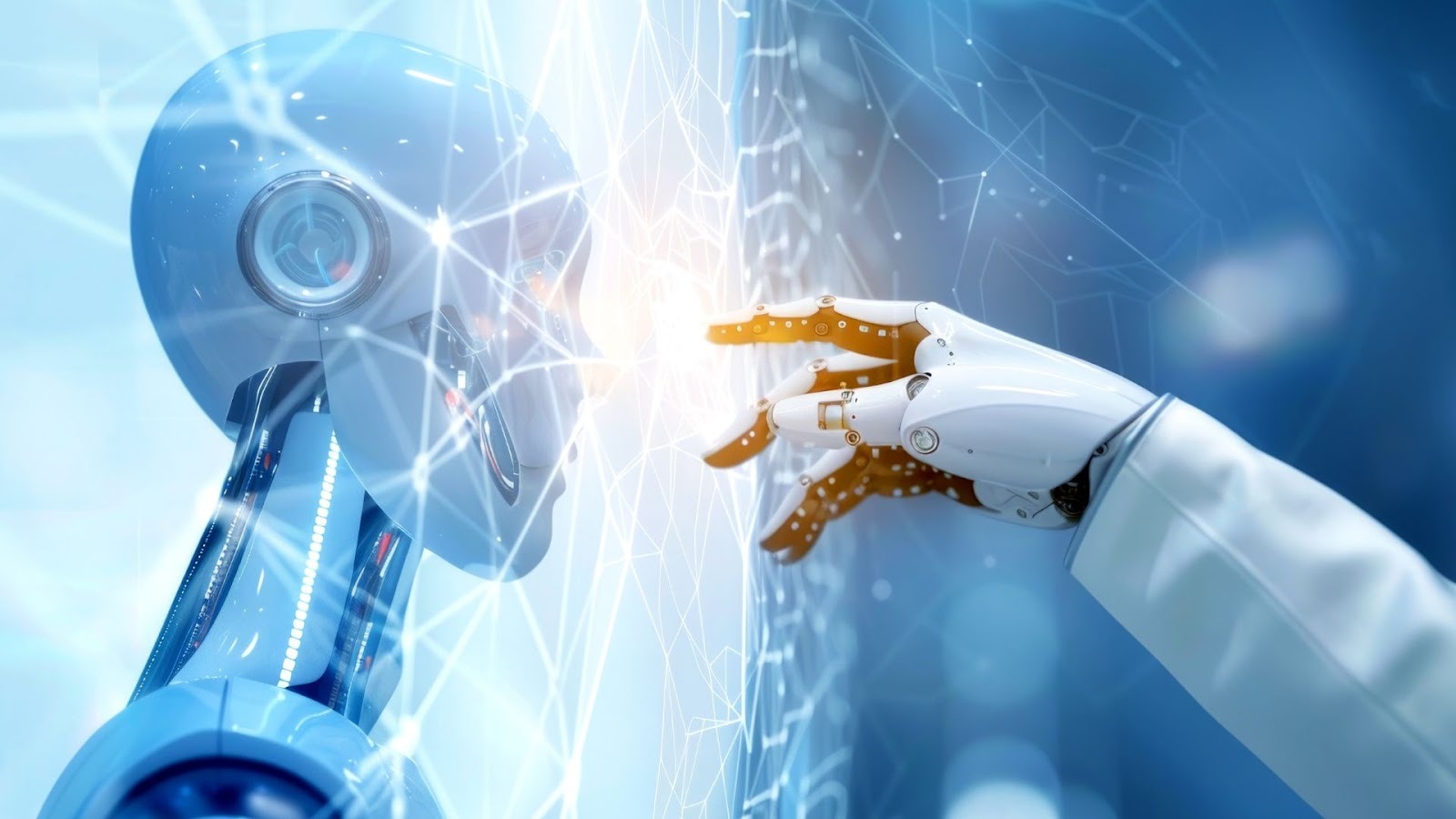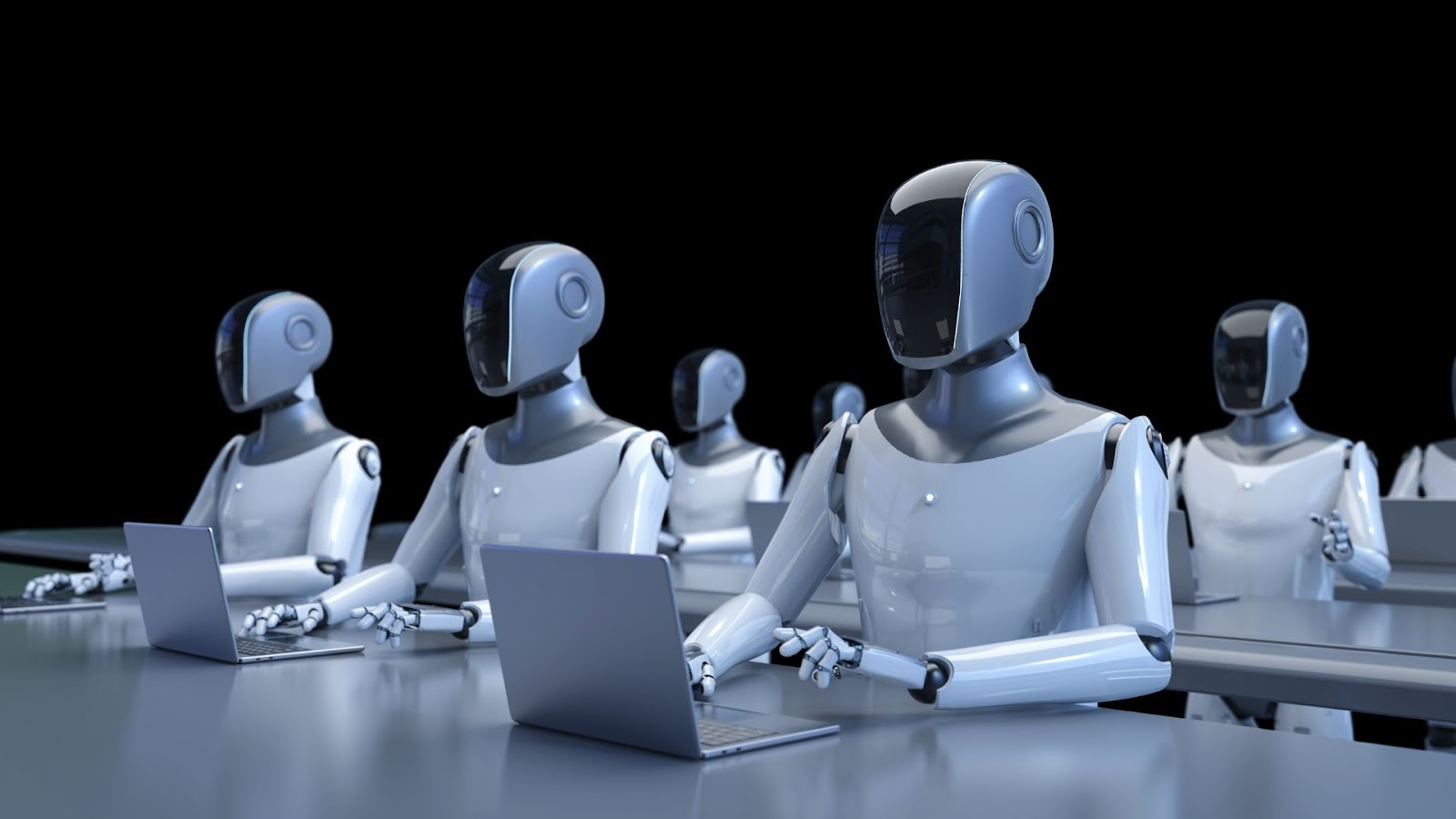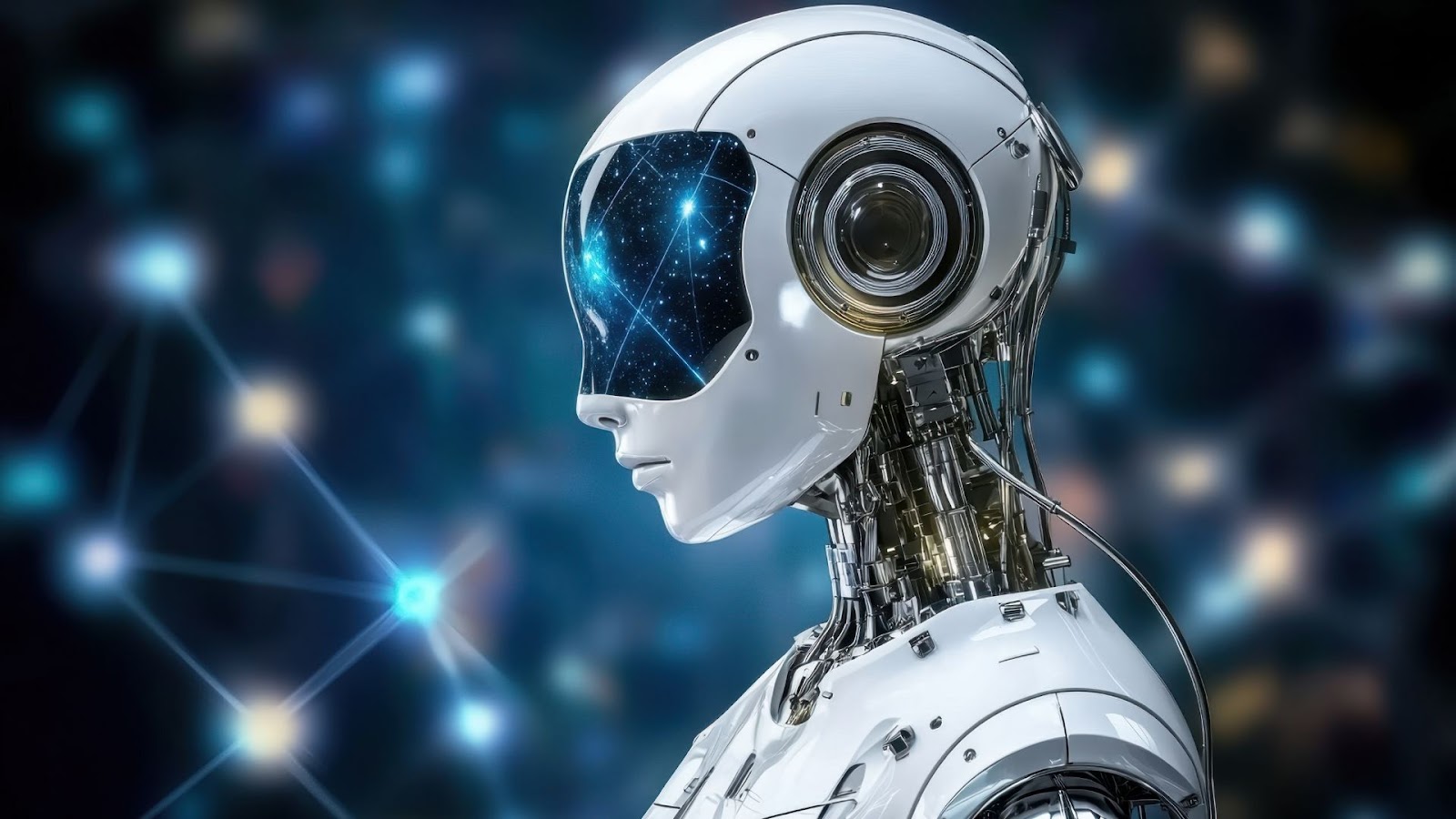The workplace of 2025 is no longer just about human talent; it is about human and AI collaboration. According to McKinsey, nearly all companies are investing in AI, yet only 1% have achieved full maturity in its integration. This gap highlights a significant opportunity for businesses to harness AI's potential effectively.
As AI takes on more sophisticated tasks, from scheduling and customer interactions to data analysis and workflow management, organizations are discovering that the future of work is a partnership between human expertise and intelligent automation. Understanding how AI employees function, their impact on productivity, and how they integrate into teams is no longer optional. It is essential for staying competitive in 2025 and beyond.
Whether you are leading a team, managing operations, or planning your career path, grasping the dynamics of AI in the workplace can give you a clear advantage in navigating the evolving digital workforce.
Key Takeaways
- AI employees are redefining the modern workplace by handling complex, data-driven tasks and collaborating seamlessly with human teams to improve efficiency and innovation.
- Industries like healthcare, finance, customer service, and logistics are already experiencing measurable gains through AI integration, from faster decision-making to enhanced customer satisfaction.
- Responsible adoption is essential. Organizations must address ethical challenges such as bias, data privacy, and transparency to maintain trust and accountability.
- Preparing for an AI-integrated workforce involves reskilling employees, fostering collaboration, implementing governance policies, and starting with pilot programs for smooth adoption.
What Are AI Employees?
AI employees are advanced digital systems designed to perform human-like tasks either autonomously or in collaboration with human colleagues. Unlike basic automation tools, AI employees can interpret data, make decisions, and adapt their actions based on changing circumstances, enabling them to handle complex workflows and contribute meaningfully to organizational objectives.
To better understand their scope and functionality, it is helpful to distinguish between AI agents and AI employees.
AI Agents vs AI Employees

AI employees come in different forms and serve varying levels of functionality within an organization. While some AI tools are designed to assist humans with specific tasks, others act as autonomous digital workers capable of handling complex workflows independently. Understanding the differences between these types of AI systems is essential for businesses looking to maximize efficiency, streamline processes, and make strategic decisions.
The table below breaks down the key distinctions between AI agents and AI employees, highlighting their definitions, autonomy, scope, examples, and strategic impact.
Also Read: Customizable AI Desktop Companion Experiences
This distinction helps organizations understand the level of autonomy and strategic impact they can expect from AI integration in the workforce.
Having explored the differences between AI agents and AI employees, it’s crucial to understand how organizations gain real, measurable value by integrating AI employees into their workforce.
What are the Benefits of AI Employees?
Integrating AI employees into the workforce enhances how organizations operate. By combining computational speed with intelligent decision-making, AI employees help businesses tackle complex challenges, reduce operational risk, and unlock new opportunities. The benefits go beyond efficiency, impacting accuracy, innovation, and strategic growth across industries.
Here are some key advantages of AI employees:
- Precision and Consistency in Complex Tasks: Unlike humans, AI employees can execute highly detailed tasks consistently without fatigue or human error. For instance, in finance or healthcare, AI can process hundreds of transactions or medical images simultaneously, maintaining accuracy that is hard for humans to match.
- Augmented Human Expertise: AI employees do not replace humans; they enhance their capabilities. In industries like engineering or design, AI can simulate multiple scenarios, provide predictive insights, and suggest optimized solutions, enabling professionals to make faster, smarter decisions.
- Adaptive Learning and Continuous Improvement: AI employees learn from each task they perform, constantly improving their efficiency. Over time, this leads to smarter workflows, fewer bottlenecks, and predictive problem-solving across operations.
- Rapid Knowledge Integration: AI employees can instantly access and synthesize data from multiple sources, including internal databases, market reports, or real-time analytics, allowing teams to act on insights without waiting for human data aggregation.
- Enhanced Compliance and Risk Mitigation: In heavily regulated industries such as finance, healthcare, or logistics, AI employees monitor transactions, workflows, and data handling continuously. They flag anomalies, detect compliance breaches, and reduce organizational risk proactively.
- Innovation Enabler: By taking over routine, rule-based tasks, AI employees free humans to experiment, innovate, and focus on creative problem-solving, driving product development and new service models faster than traditional workflows allow.
Understanding the benefits of AI employees makes it clear why organizations across different sectors are adopting them. Let’s take a closer look at the specific industries that are leveraging AI employees to drive efficiency, innovation, and better outcomes.
Industries Benefiting from AI Employees

Across industries, AI employees are playing an increasingly critical role in improving efficiency, accuracy, and decision-making. Several sectors are already seeing tangible benefits from integrating AI employees, from streamlining workflows to improving customer experiences and driving innovation.
Here are some key industries that are benefiting from AI employees:
1: Healthcare
AI employees streamline administrative tasks such as patient record management, appointment scheduling, and billing. They also assist healthcare professionals in diagnostics by analyzing medical images, lab results, and patient histories. Furthermore, AI-driven chatbots and virtual assistants provide timely patient support, improving engagement and satisfaction while allowing medical staff to focus on critical care.
2: Finance
In the financial sector, AI employees play a vital role in risk assessment, fraud detection, and compliance monitoring. They can quickly analyze vast datasets to identify unusual patterns, flag potential threats, and ensure regulatory compliance. By automating routine reporting and data analysis, AI employees allow human analysts to focus on strategic decision-making and investment planning.
3: Customer Service
AI employees enhance customer support by providing 24/7 assistance, resolving common queries instantly, and routing complex issues to human agents. With natural language processing (NLP) and sentiment analysis, AI can understand customer intent, provide personalized recommendations, and maintain consistent service quality. This not only improves customer satisfaction but also reduces response times and operational costs.
4: Logistics and Supply Chain
AI employees optimize supply chains by forecasting demand, managing inventory, and planning efficient delivery routes. They can detect potential disruptions, suggest alternative routes, and automate warehouse operations. This results in faster deliveries, lower operational costs, and improved accuracy in inventory management, giving companies a competitive edge in a fast-paced market.
These examples demonstrate how AI employees are not just enhancing individual tasks but transforming entire industries, helping organizations operate more efficiently, respond faster to market demands, and deliver better experiences to customers and stakeholders.
Understanding the industries that benefit from AI employees highlights the value they bring, but to fully appreciate their impact, it is important to examine how they work and what makes them effective in these roles.
Also Read: AI Task Managers and Scheduling Tools for 2025
How AI Employees Work and What They Can Do
AI employees bring a combination of advanced capabilities and practical functionality, enabling organizations to enhance productivity, reduce errors, and seamlessly integrate AI into their operations. Their features can be grouped into two complementary aspects: core capabilities and operational functionality.
Core Capabilities of AI Employees
AI employees combine intelligence, precision, and adaptability to perform a wide range of functions that go far beyond automation. Here is how they enhance everyday operations across teams and departments:
- Automation and Accuracy: AI employees excel at executing repetitive or data-intensive tasks with unmatched consistency. From processing invoices to analyzing reports, they minimize human errors and improve overall reliability. Over time, they also learn from patterns and feedback, becoming more accurate and efficient.
- Multifunctionality: Unlike traditional tools designed for single purposes, AI employees can operate across HR, finance, operations, and customer service functions. Whether managing leave requests, reconciling expenses, or handling customer queries, they adapt quickly to different departmental needs, acting as multi-skilled digital workers.
- 24/7 Availability: AI employees do not need breaks or downtime. They operate continuously, ensuring critical tasks like customer support, data monitoring, and workflow management run smoothly around the clock. This uninterrupted availability helps teams maintain productivity across global time zones.
- Human-like Interactions: Thanks to natural language processing and contextual understanding, AI employees can communicate clearly and naturally. They interpret tone, intent, and context, allowing them to interact effectively with both customers and colleagues, much like a human team member.
Operational Functionality
While their capabilities define what they can do, their functionality determines how they fit into real-world operations.
- Task Delegation: AI employees autonomously manage routine processes while identifying when a task requires human judgment. This balance ensures speed without compromising decision quality.
- Workflow Integration: Modern AI employees are designed to integrate smoothly with existing tools and systems, such as CRMs, ERPs, or communication platforms, without major workflow disruptions. This makes implementation easier and reduces resistance from teams.
- Human Collaboration: Instead of replacing people, AI employees work alongside them. They help reduce context switching by summarizing data, suggesting next steps, and offering real-time insights that empower teams to focus on strategic and creative work.
By combining these capabilities and operational features, AI employees not only perform tasks efficiently but also fit smoothly into organizational workflows, acting as both autonomous contributors and collaborative partners.
While AI employees offer significant benefits and capabilities, integrating them into the workforce is not without challenges. Organizations must carefully navigate operational, ethical, and social considerations to ensure AI adoption is responsible and sustainable.
Challenges and Ethical Considerations

As organizations increasingly adopt AI employees, it is essential to recognize that their integration comes with challenges and ethical considerations. From potential workforce impacts to data privacy and algorithmic bias, understanding these issues helps businesses implement AI responsibly while maximizing its benefits. Here are some key challenges and ethical considerations to keep in mind:
- Job Displacement: AI employees can automate routine and repetitive tasks, which may lead to workforce reductions in certain roles. Companies must plan for reskilling and redeployment to mitigate the impact on employees.
- Bias and Fairness: AI systems can inherit biases present in the data they are trained on, potentially leading to unfair or discriminatory outcomes. Regular audits and diverse datasets are essential to minimize these risks.
- Data Privacy and Security: AI employees often require access to sensitive data to function effectively. Protecting this data and ensuring compliance with regulations like GDPR is crucial to avoid breaches and maintain trust.
- Transparency and Accountability: Decisions made by AI employees need to be explainable, especially in critical sectors like finance, healthcare, and legal services. Organizations must establish clear accountability for AI-driven decisions.
- Integration and Change Management: Implementing AI employees requires aligning technology with existing workflows, training staff, and fostering a culture that embraces AI while addressing resistance and fear of change.
By proactively addressing these challenges and ethical considerations, organizations can integrate AI employees responsibly, ensuring technology enhances human work, builds trust, and delivers sustainable value across the business.
Understanding the challenges and ethical considerations of AI integration is essential, but knowing the steps to prepare your workforce ensures that AI adoption is not only responsible but also effective and sustainable.
Also Read: Top AI Tools for Product Managers and Product Teams
How to Prepare Your Team for the AI-Integrated Workforce
Successfully integrating AI employees requires more than simply installing new technology. It demands a strategic approach that balances innovation with human factors, ensuring both employees and AI work together effectively. Here is how organizations can prepare for an AI-integrated workforce in a thoughtful and actionable way.
1. Conduct a Deep Workforce and Process Assessment
Start by mapping out your current workflows and understanding where bottlenecks, inefficiencies, or frequent errors occur. Do not limit the assessment to repetitive tasks. Also consider decision-heavy processes where AI insights could provide meaningful support. Identify which areas will benefit most from AI, whether it is automating data-heavy operations, enhancing customer interactions, or providing predictive insights for strategic decisions.
2. Plan for Employee Reskilling and Upskilling
AI integration is not about replacing people. It is about reallocating human potential to higher-value activities. Provide training programs that help employees understand how AI works, interpret AI-generated insights, and effectively collaborate with digital coworkers. Focus on developing skills like critical thinking, creativity, problem-solving, and AI literacy. Highlight real-life use cases within the organization so employees see how AI can reduce their workload rather than threaten their roles.
3. Implement Pilot Programs Before Full-Scale Deployment
Avoid rolling out AI across the entire organization at once. Begin with pilot programs in a few departments or processes. Monitor how AI employees interact with existing workflows, evaluate productivity improvements, and gather feedback from human teams. This approach reduces risks, uncovers hidden challenges, and allows fine-tuning of AI behavior before wider deployment.
4. Establish Strong Governance and Ethical Guidelines
AI integration comes with responsibility. Set clear policies around data access, security, privacy, and ethical use. Establish guidelines for transparency and accountability, especially in decision-making processes that impact customers or employees. Regular audits and bias checks are essential to ensure AI decisions are fair and reliable. Communicate these rules across the organization so everyone understands the boundaries and expectations for AI use.
5. Foster a Collaborative, AI-Friendly Culture
Cultural readiness is as important as technological readiness. Encourage employees to see AI as a partner that complements their work. Share success stories where AI has improved efficiency, reduced repetitive tasks, or unlocked new opportunities for creativity. Promote open communication to address fears or resistance and involve employees in shaping how AI integrates into their daily work.
6. Continuously Monitor, Measure, and Optimize
Deployment is not the end of the journey. Track performance metrics like task completion rates, error reduction, operational efficiency, and employee engagement. Use insights to continuously refine AI workflows and processes. Regularly review AI-human collaboration effectiveness to ensure that AI employees are adding value without creating friction or confusion.
7. Prepare for Change Management
AI adoption changes the dynamics of work, which can create uncertainty. Develop a structured change management plan that includes clear communication, leadership involvement, and ongoing support. Recognize and reward teams that embrace AI collaboration, and ensure that employees feel supported throughout the transition.
By taking these steps, organizations can create an environment where AI employees complement human talent, boost productivity, and drive innovation, while employees feel empowered and engaged rather than threatened.
While preparing your team for AI integration is crucial, having the right tools to support this transition makes all the difference. This is where Clockwise steps in to bridge the gap between human productivity and AI efficiency.
How Clockwise Supports the Future of Work
As organizations move toward an AI-integrated future, time has become one of the most valuable resources. This is where Clockwise plays a crucial role.
Clockwise helps teams reclaim focus time, reduce scheduling conflicts, and create a more balanced workday. By using intelligent automation and AI-powered scheduling, it ensures that people spend less time coordinating and more time on meaningful work.
For businesses introducing AI employees, Clockwise complements this shift by improving how human teams collaborate, plan, and manage time alongside digital systems. The platform automatically optimizes calendars, prioritizes deep work hours, and supports hybrid and distributed teams with smarter meeting management.
Here is how Clockwise adds value to the modern, AI-driven workplace:
- AI-Optimized Scheduling: Aligns meetings and tasks intelligently to reduce context switching.
- Focus Time Protection: Blocks uninterrupted time for complex or creative work.
- Workload Visibility: Helps teams balance priorities and avoid burnout.
- Collaborative Efficiency: Enhances coordination between human employees and automated systems for smoother workflows.
As AI employees take on operational tasks, tools like Clockwise ensure human employees stay productive, creative, and connected, making it easier for organizations to thrive in the evolving digital workplace.
Contact us to learn more about how Clockwise is redefining time management for the AI era.
Conclusion
As the 2025 workforce continues to evolve, AI employees are no longer a futuristic concept but a practical reality reshaping how businesses operate. Their ability to handle complex, data-driven tasks while collaborating with human teams opens new possibilities for efficiency, innovation, and growth.
However, success with AI integration depends on balance. It requires embracing automation without losing the human touch that drives creativity, empathy, and leadership. Organizations that invest in responsible AI adoption, continuous upskilling, and collaborative tools will not only stay competitive but also set new standards for productivity and workplace harmony.
AI employees are here to stay, but the true differentiator lies in how effectively humans and AI learn to work together. The future of work belongs to those who can combine technological intelligence with human insight to create smarter, more connected, and purpose-driven organizations.
FAQs
1. What makes AI employees different from traditional automation tools?
AI employees are designed to work autonomously and adapt to real-time data, unlike traditional automation tools that follow fixed rules. They can make decisions, learn from patterns, and collaborate with human workers, making them capable of handling dynamic, context-driven tasks rather than repetitive workflows alone.
2. Will AI employees replace human jobs completely?
AI employees will automate certain roles, especially repetitive or data-heavy ones, but they will also create new positions centered on AI supervision, data management, and strategic decision-making. The focus is shifting from replacement to collaboration, where humans handle creativity, judgment, and emotional intelligence while AI manages efficiency and scale.
3. What skills will be most valuable in an AI-integrated workplace?
Skills such as problem-solving, creativity, digital literacy, and adaptability will be critical. Employees who can work alongside AI systems, interpret their outputs, and apply strategic insights will remain indispensable in every industry.
4. How can businesses ensure ethical use of AI employees?
Organizations should establish clear governance frameworks that focus on transparency, fairness, and accountability. Regular audits, bias testing, and compliance with data privacy laws help maintain trust and prevent misuse of AI capabilities.
5. What are some early signs that an organization is ready for AI employees?
Indicators include strong data infrastructure, leadership commitment to digital transformation, and a culture open to innovation. Companies that already use data analytics and automation tools effectively are often better positioned to integrate AI employees successfully.


.gif)
.png)

.jpeg)

